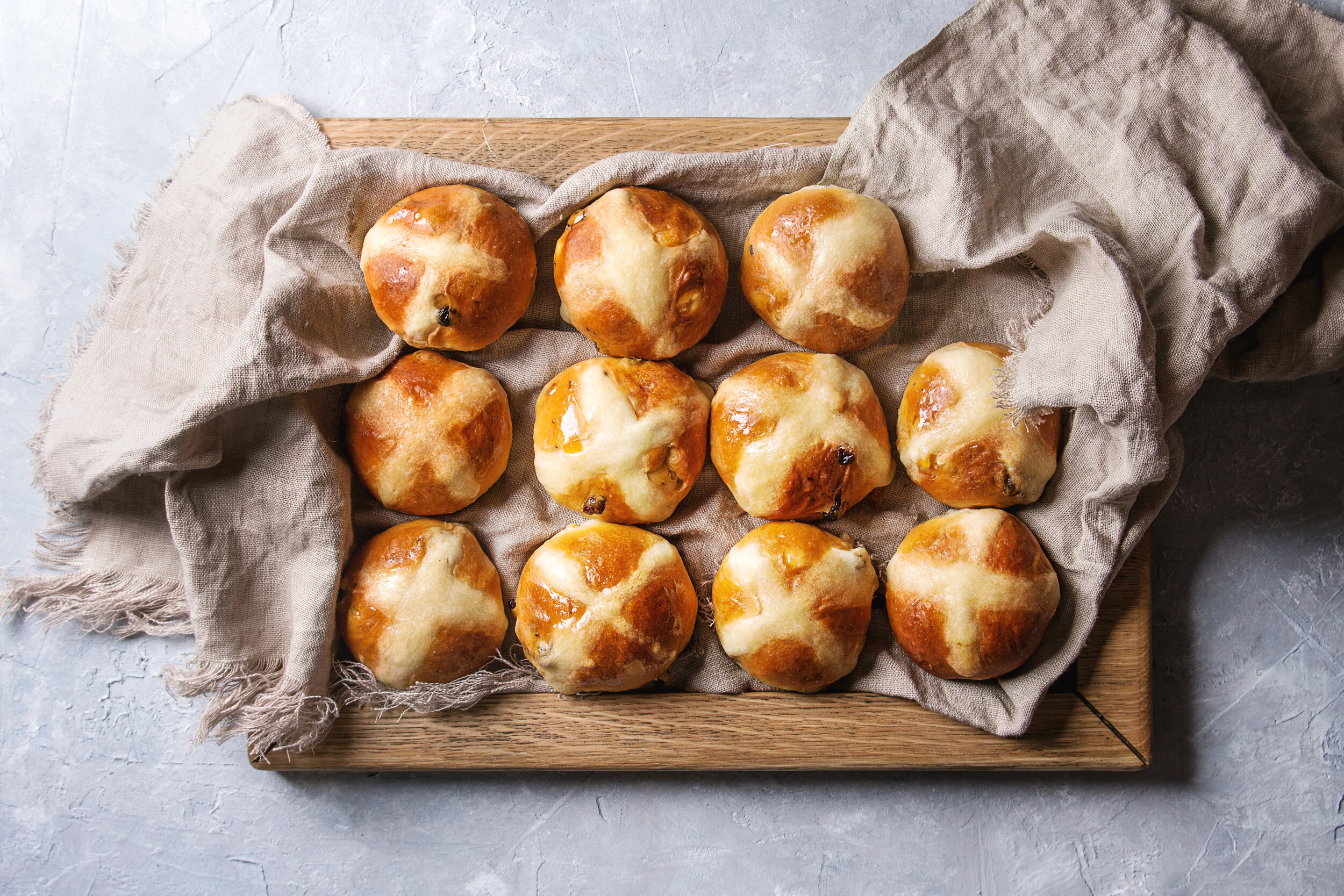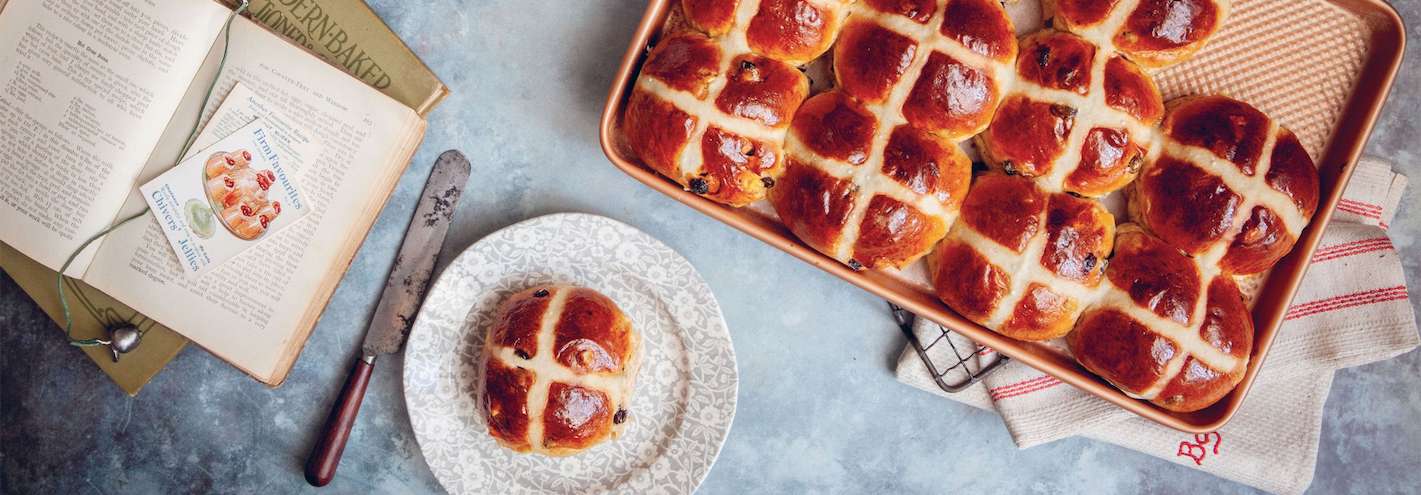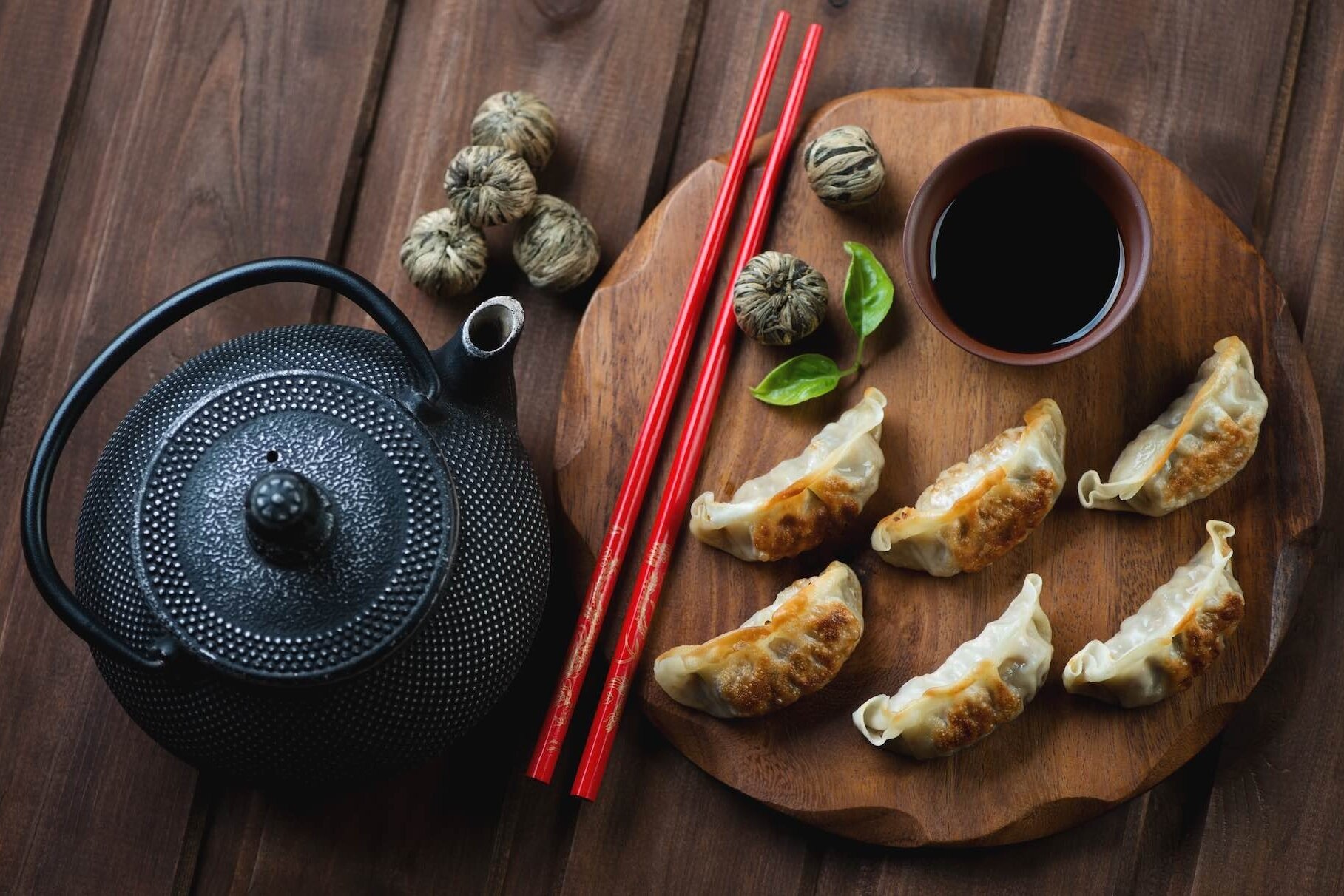Advertisement
Hot cross buns: edible history
30 March 2021 · Discover ckbk · Essential Dishes
These leavened spiced buns have been an Easter tradition for centuries in the UK. Read about their history and lore, and find out five things you probably didn’t know about hot cross buns.
After the long Lenten fast, the feast of scented buns, loaves, and cakes that marks the arrival of Easter comes as sweet relief. In the UK, Good Friday has traditionally been the day to begin the Easter bun-fest by tucking into hot cross buns.
These pillow-soft yeasted buns marked with a cross on top are studded with raisins or currants, candied citrus peel, and flavored with warming spices – typically cinnamon, cloves, nutmeg, and allspice. Served warm with lashings of melted butter, they come close to bun perfection.
Yet that hasn’t stopped supermarkets and commercial bakers keen to innovate from messing about with the ingredients. In the run-up to Easter each year, the rush to outdo the competition with ‘alternative’ flavors hots up. Mocha, chocolate chip, salted caramel, rhubarb, apple & cinnamon, earl grey tea & mandarin, and raspberry & white chocolate are just some of the flavor combinations that have posed a challenge to hot cross bun orthodoxy in recent years.
Is innovation necessarily an improvement on tradition? Probably not, which is why home bakers tend to keep recipe twists to a minimum and stick close to the traditional rendition. And hot cross buns do have a lot of tradition – centuries of it, in fact.
ckbk’s most popular hot cross buns recipes
Hot cross buns: a bit of history

Hot cross buns are now a traditional Easter bake, with the cross on top said to symbolize the Crucifixion, yet many historians believe that hot cross buns pre-date Christianity. In the Oxford Companion to Food, Alan Davidson states, “The Greeks and Romans had similar practices and the Saxons ate buns marked with a cross in honour of the goddess of light, Eostre, whose name was transferred to Easter.”
Food historian and writer Regula Ysewijn also links the hot cross bun to both Christianity and to paganism: “The cross on the bread represented the rebirth of the world after the winter and the four phases of the moon, as well as the four seasons and the wheel of life, which are very strong images in pagan tradition,” she writes in Oats in the North, Wheat from the South: The History of British Baking, Savoury and Sweet.
5 things you probably didn’t know about hot cross buns
Given their lengthy history, it’s not surprising that there is lore, superstition, and tall tales aplenty associated with the hot cross bun. Here are five…
According to superstition, hot cross buns baked on Good Friday won’t go moldy for at least a year.
Hot cross buns were sometimes taken on ships to prevent shipwrecks.
Beyond hot cross buns
The combination of yeasted dough, warming spices, and fruit isn’t unique to hot cross buns. These traditional Easter breads have flavors that may be familiar – give one or two a go.
Related Posts
Advertisement




